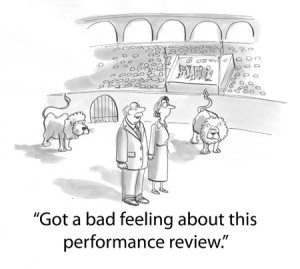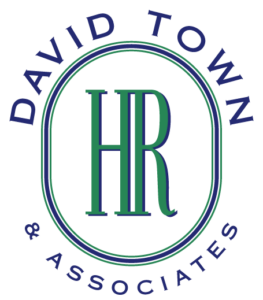Managing Employee Performance – It’s Not About the Forms

This blog is the first in a series focusing on the topic of “Managing Employee Performance”. This is a hot topic with many organizations because the performance management process they are using often creates more problems than it solves.
Research indicates that many organizations have chosen to abandon what they describe as the “annual performance appraisal” process because of the problems it seems to create. This blog will address some of the key challenges faced by organizations in managing employee performance.
In a recent article published by HRM Canada, Rajeev Behera, CEO of Reflektive – a San Francisco-based performance management consulting company – identified two key problems with how performance assessment is currently managed within organizations.
The first issue is rating distributions
Behera argues that employees can be demotivated and will become disengaged if they don’t score at the top of the scale.
The challenge in dealing with this issue is that with any group of employees, some employees achieve better results than others. Rarely, if ever, do all employees perform at exactly the same level. So, as we try to understand why employees are demotivated or disengaged, it is worth considering that the underlying problem may be the message employers send to employees within the performance management process.
If the primary expectation of the organization is that an employee’s performance should be judged relative to their peers, than one can see how employees can become discouraged and disengaged because most employees will fall short of the level of achievement of the best performer.
However, if the primary expectation is that an employee’s performance should be judged relative to their own potential, the change in focus may result in a higher level of motivation and engagement. If an employee is receiving feedback on their achievements relative to their potential and to a fixed standard, they will receive positive reinforcement when they meet expectations and may be more willing to accept the inevitable comparisons with other employees when it comes to compensation and/or promotions.
If they are constantly compared to the highest achiever, than the feedback will rarely sound positive and could be very discouraging. In the world of sports, you will find plenty of examples of coaches who have been successful by communicating with an athlete with a focus on helping the athlete achieve their full potential as opposed to constantly focusing on whether the athlete is as good as the superstar player.
In a pay-for –performance world, there is a good chance that a person’s performance relative to their peers will impact their compensation. However, a focus of doing the best they can versus outperforming their peers can have a significant difference on their motivation and the team dynamics which will ultimately improve the collective performance of the group.
The solution lies in having the appropriate messaging between managers and employees.
The second issue Behera identified in his article is the negative impact that “rater bias” has on the performance assessment process
“Rater bias” occurs when different types of biases and/or perceptual filtering impact the objectivity and accuracy of the performance assessment.
An example of this is the “recency effect”. This can occur when a manager is tasked with providing an overall performance assessment for an employee for the previous year but can only remember details of the employee’s performance over the past few weeks or months. This results in a performance assessment based on the most recent months and not the full year.
I can recall supporting a group where the employees knew that most managers did not record information relating to past performance. The employees knew that the managers were counting on their memories during the annual review process. As a result, some employees performed at a much higher level in the three months leading up to the annual review cycle and tended to coast for the other nine months. For the employees who worked hard all year long, this created significant feelings of unfairness and inequity because their consistent performance was not being acknowledged or documented.
Knowing that there is a strong possibility that the issues identified above may be present in the performance management systems within an organization, should the response be to scrap performance management? I believe this is an overreaction.
The concept of managing employee performance should not be abandoned because of poor execution of the process. Feedback on performance is essential to success.
I found the following insight posted on the internet by Susan Harjehausen: “Did you know that an Apollo rocket is actually on course only two or three percent of the time? At least 97% of the time it takes to get from the earth to the moon, it’s off course.” That data seems startling. If NASA hadn’t sought ongoing feedback and made course corrections, there would never have been a moon landing.
Performance assessment and feedback contributes to success in any context. So, what do organizations who want to effectively manage employee performance need to do?
The first step is to understand the purpose of the process of managing employee performance
The primary purpose should not be focused on compensation. Rather, it should be focused on helping employees succeed in delivering on accountabilities that are aligned with organizational objectives. When the process focuses on compensation, it often devolves into what is described as an “annual performance appraisal process.” This language is problematic because managers should not be “appraising” performance on an annual basis they should be appraising performance daily or weekly.
The annual process should be focused on a review of ongoing performance assessments carried out throughout the year. For some organizations the first step may be as simple as changing their language from “annual performance appraisals” to “annual performance reviews” to ensure that managers understand that feedback is an ongoing process and the annual meeting is a review – sort of like a highlight reel – that focuses on performance feedback that has already been shared with the employee.
These review meetings can take place more frequently than once a year, however the purpose is still to review the collective dialogue that is taken place during the performance review period.
If an organization focuses its attention on equipping managers to engage in regular dialogue with employees, they will be much more likely to achieve the objective of helping employees succeed. Also, by focusing on regular dialogue, the organization will reinforce that the process is not about the forms.
The forms that organizations use as part of their employee performance management process should assist the manager in capturing an overview of the ongoing performance feedback discussions that the manager has had with the employee. These discussions will focus on the employee achieving their full potential by offering reinforcement of desired behaviours and constructive analysis of what needs to be corrected. The forms can offer a process for capturing performance feedback throughout the year in order to avoid issue such as the recency bias. The forms can also be used to hold managers accountable for their performance assessments in order to reduce or eliminate other forms of rater bias.
Once the organization has embraced the notion that the purpose of managing employee performance is to help employees succeed in meeting their accountabilities, the execution of the process will improve. Subsequent blogs will address each of the component parts of an effective program for managing employee performance.
As always, I welcome your feedback. You can connect with me via email or telephone or leave a comment right here on the site.
Until next time,
Dave
David Town, CHRL, is a facilitator and coach of leadership and management principles that enable individuals and organizations to build greater leadership competency, resulting in higher performance and higher employee engagement. David has a particular focus on effectively managing conversations involving confrontation or conflict. As well, he provides insights and assessment strategies for integrating character competencies into leadership skills resulting in increased trust and reduced risk for leaders. David is a member of the International Coaching Federation and is President of Your Leadership Matters Inc.






Leave a Reply
Want to join the discussion?Feel free to contribute!